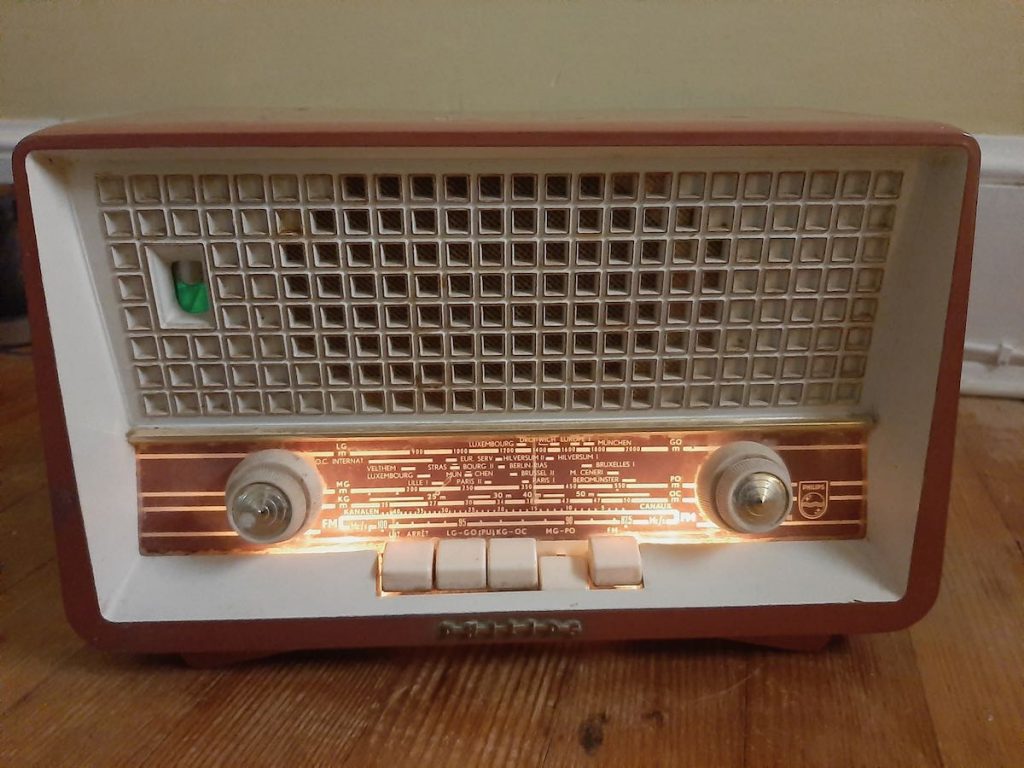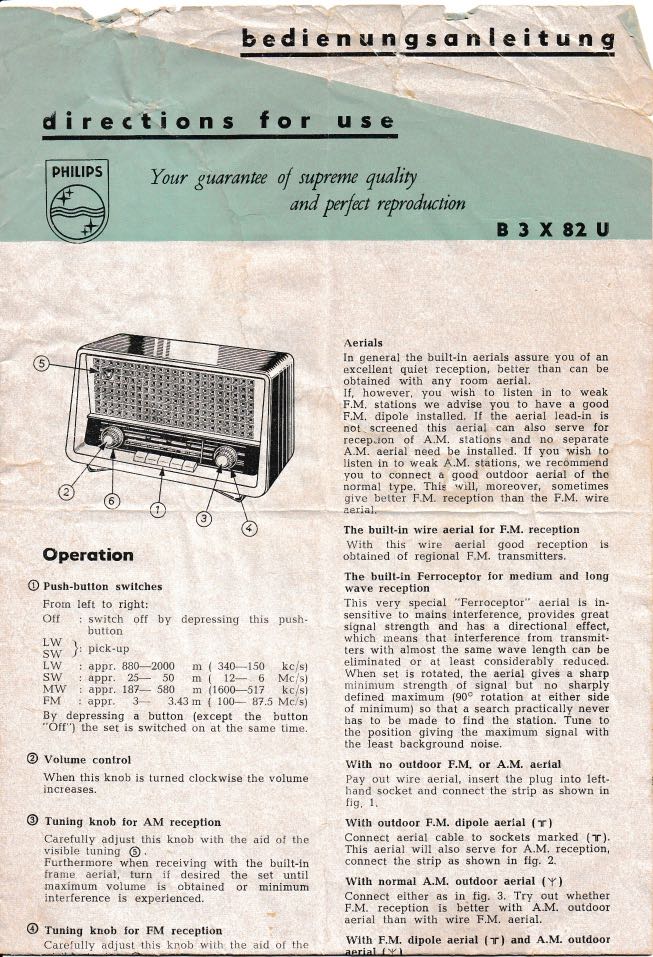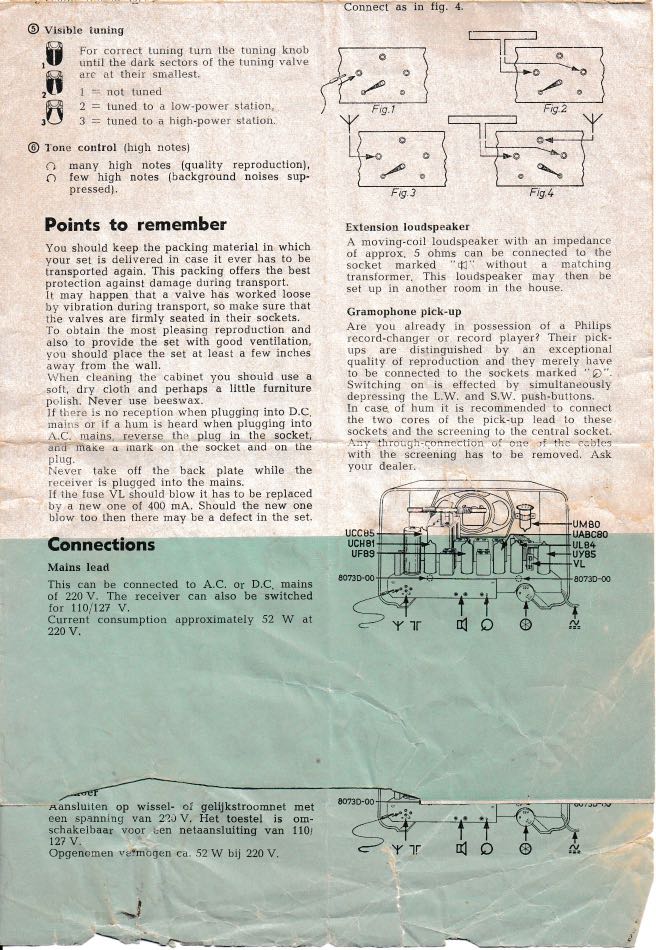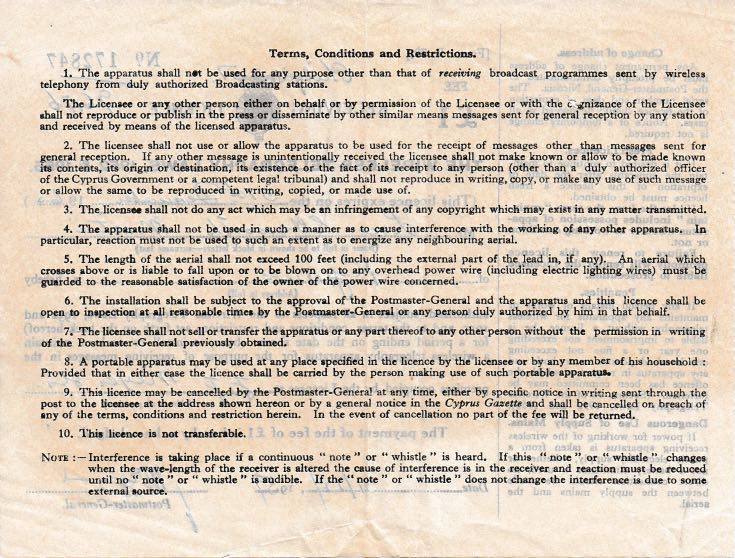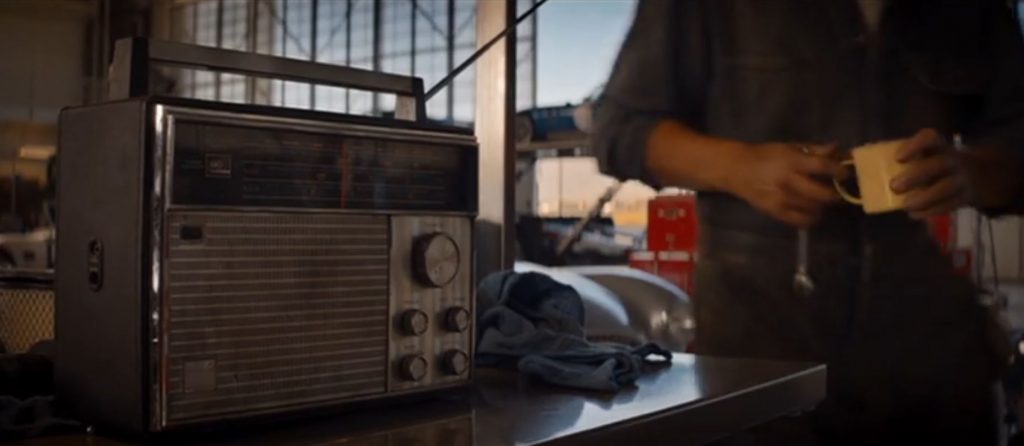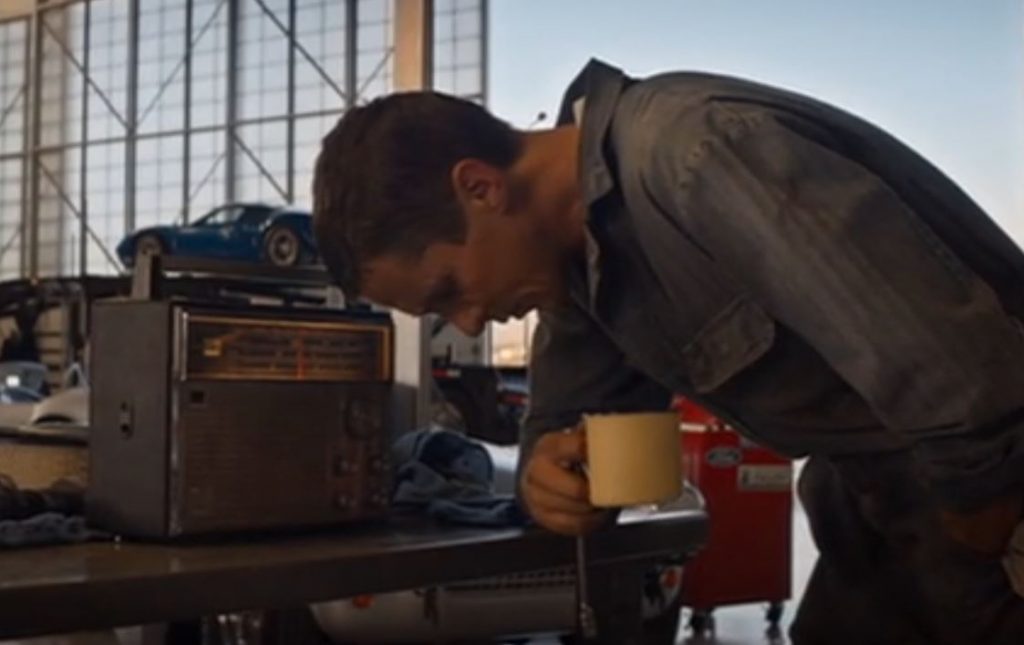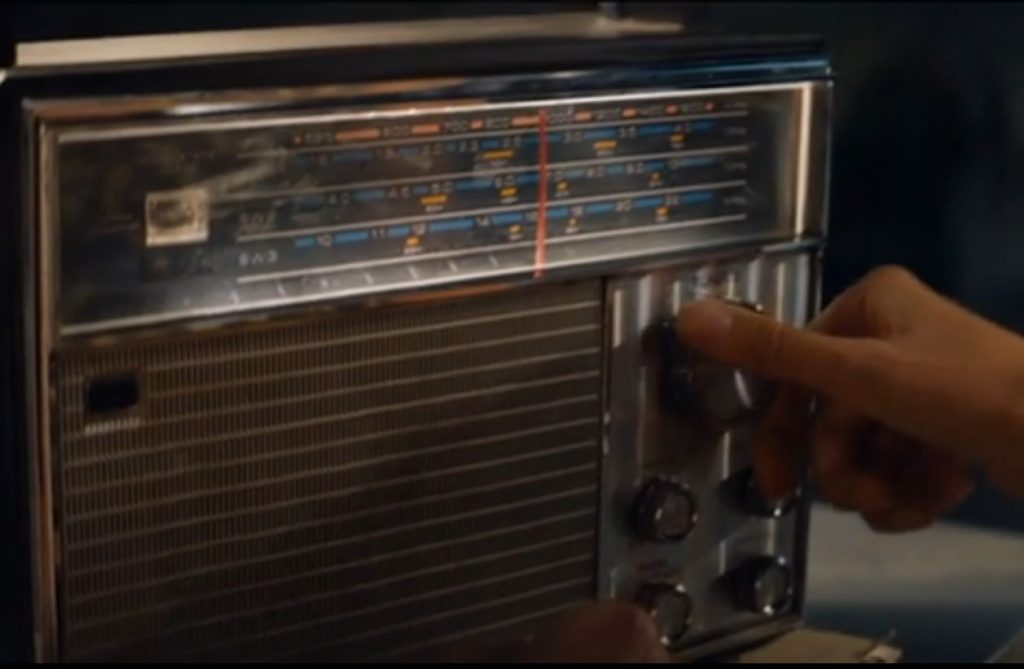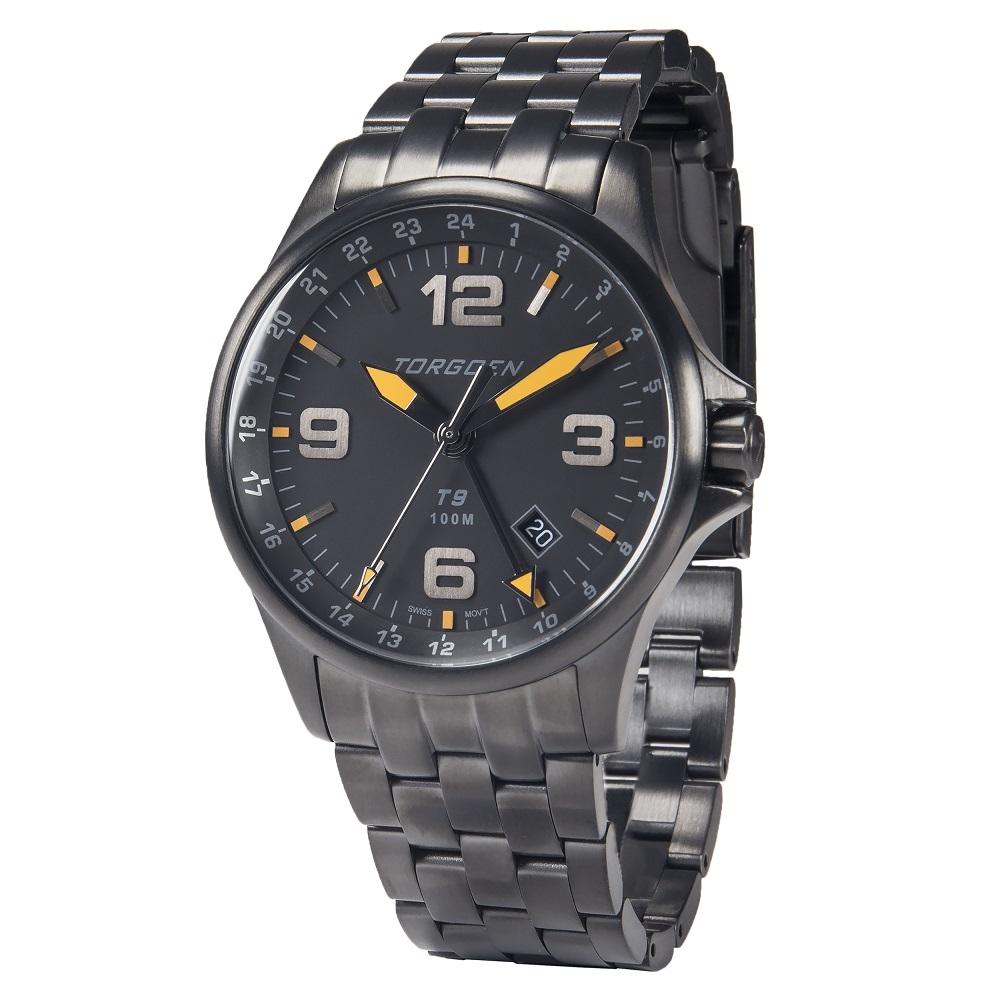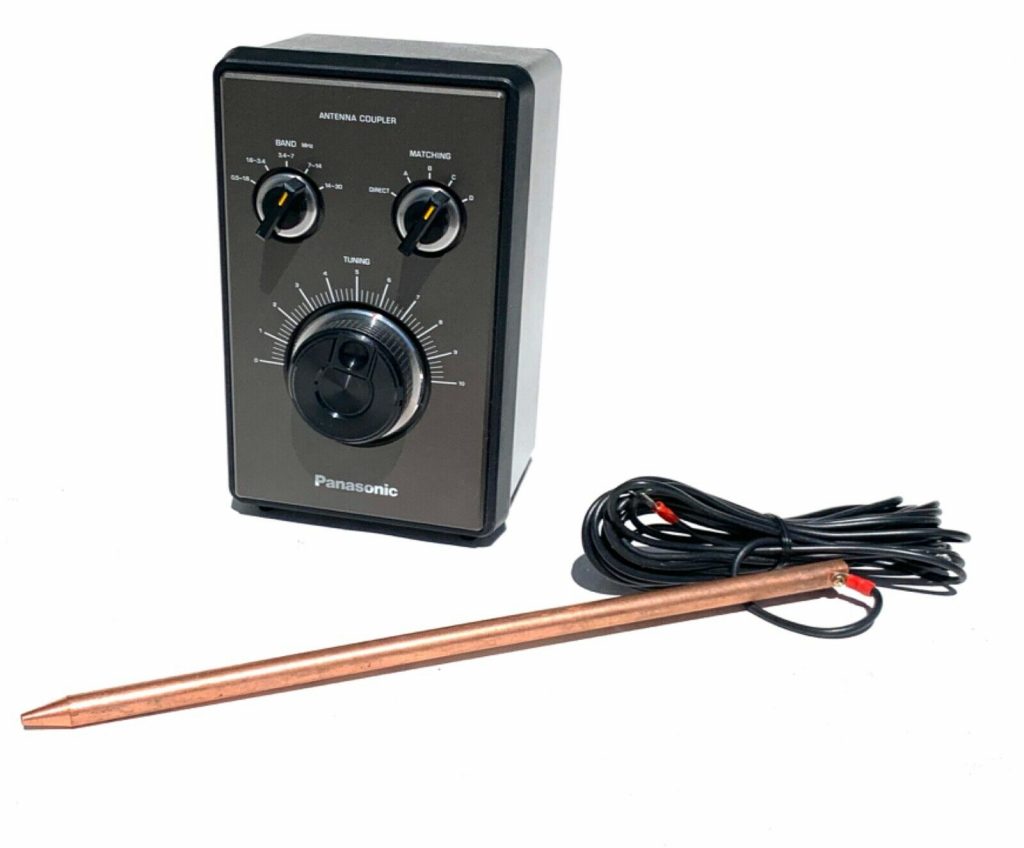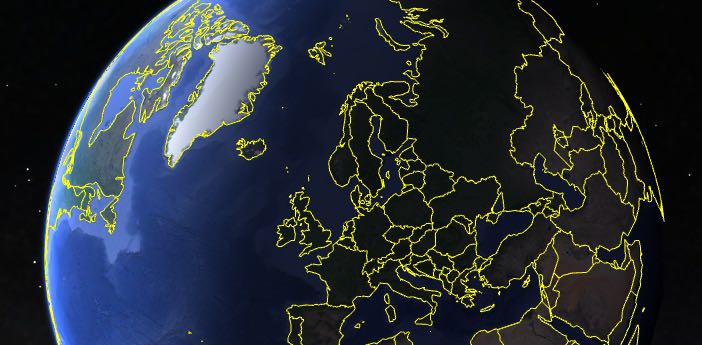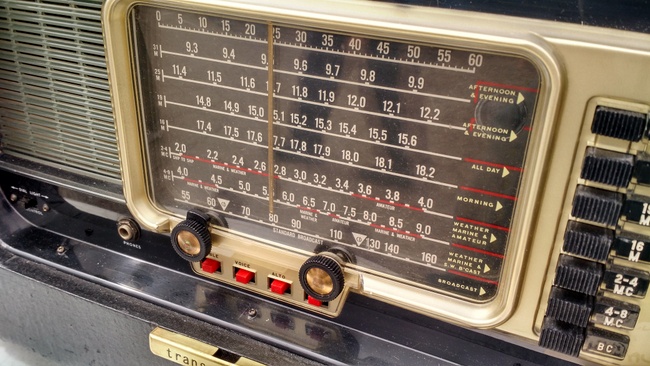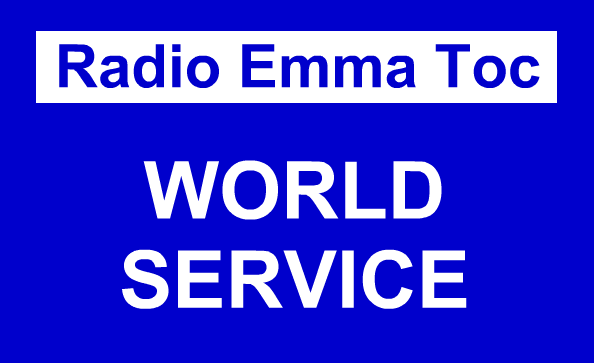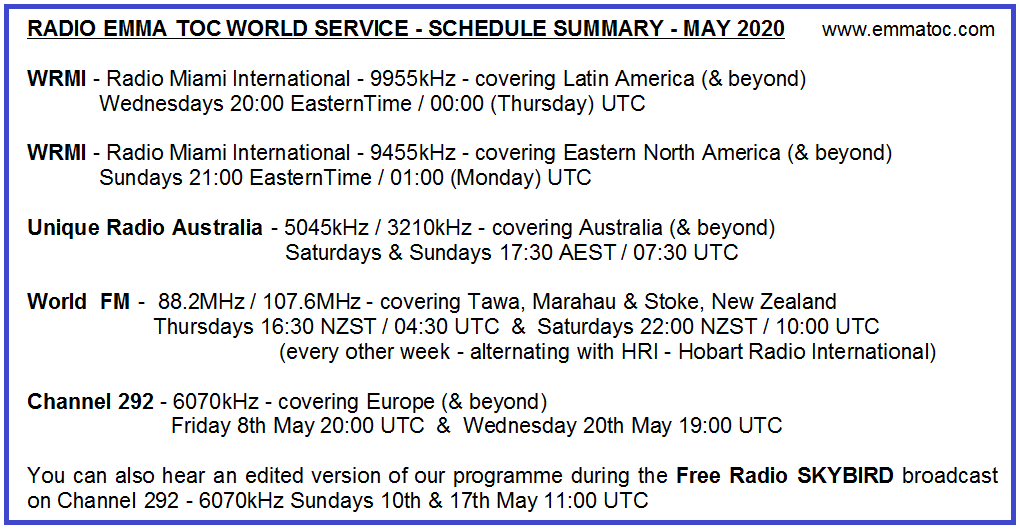Many thanks to SWLing Post contributor, Ted Lampert, who writes:
I was given some old radios belonging to a family member who passed a few years back.
A couple of them really sweet, a Philco 46-420, and a Philips B3X82U (see photo above).
Included was an envelope with some papers in it. One was the instruction booklet for the Phillips B3X82U, in multiple languages:
Another was a receiving license.
Without outing him too much, the original owner did government work and was stationed overseas quite a bit. The license looks like it was good for 1960, and I’m guessing you went to the post office to get it. It references the wireless telegraphy laws 1952 & 1955. Have you seen one of these before and do you know much about these receiving licenses?
The Philips is the radio I believe would have been probably what he got this license for since it says Philips at the top of it.
[…]Anyway, going through stuff recently, saw the license and started wondering about it.
Keep up the good work, seeing almost daily new articles on your site played a big part in keeping me inspired to get my own license, not a receiving one, but an amateur. Got general on the first try back in the fall of last year!
First of all, congratulations on snagging your General license last year! Well done!
Both the Philips and Philco are gorgeous receivers! What treasures! Ted, you had mentioned elsewhere in your message that you plan to recap them and I’m very pleased to hear this.
Like you, I was not aware of that receiving licenses were issued in the UK at the time. Perhaps this was implemented during or after WWII and was simply a requirement during the Cold War?
My hope is that a knowledgeable SWLing Post reader can shed some light on the Receiving License. Please comment with details!
Do you enjoy the SWLing Post?
Please consider supporting us via Patreon or our Coffee Fund!
Your support makes articles like this one possible. Thank you!

